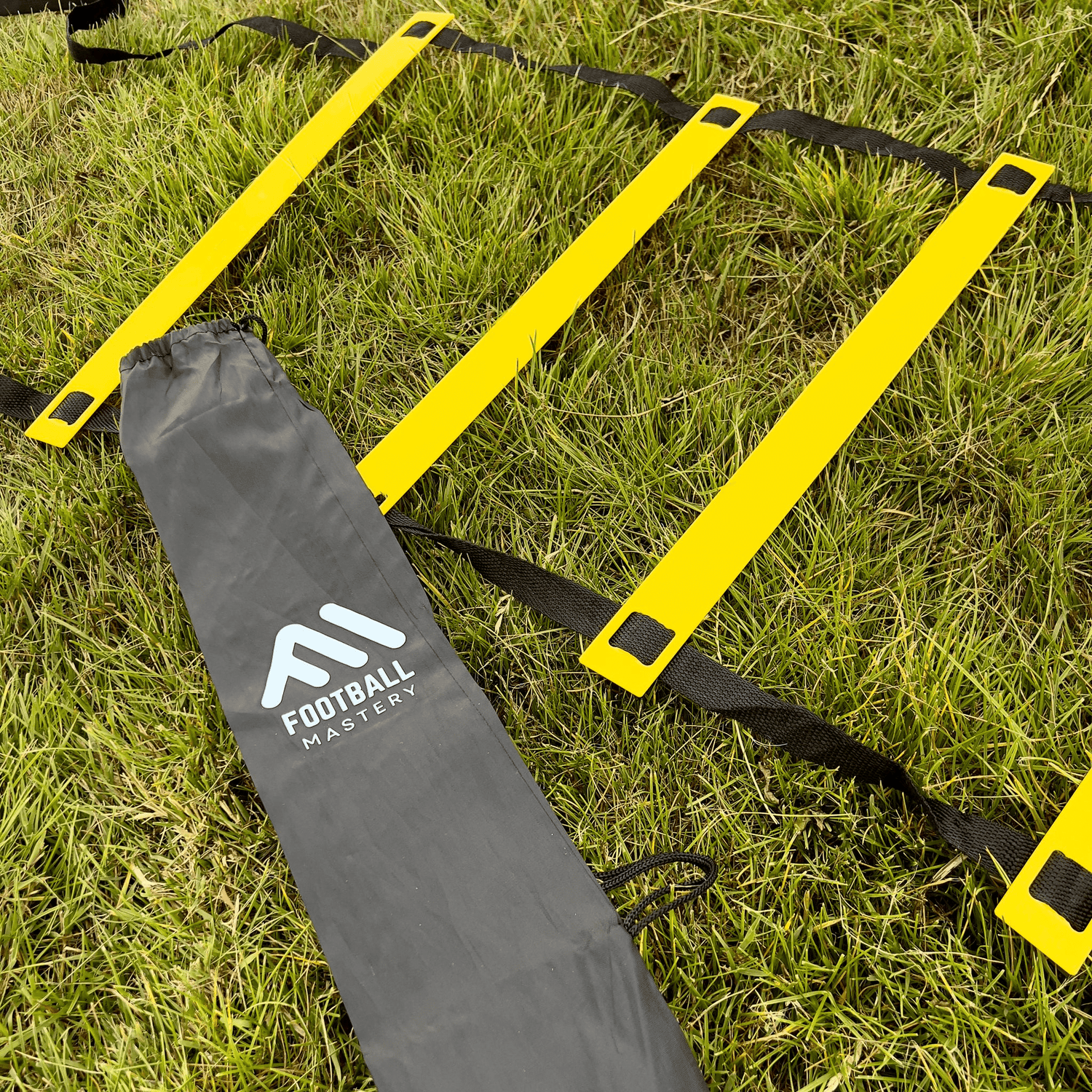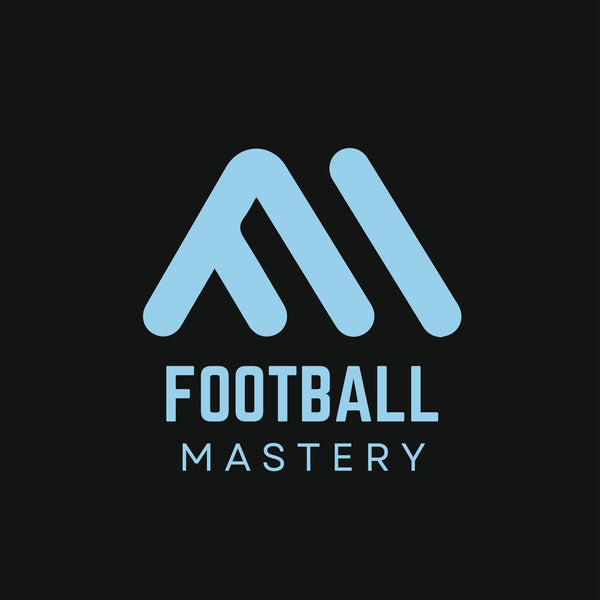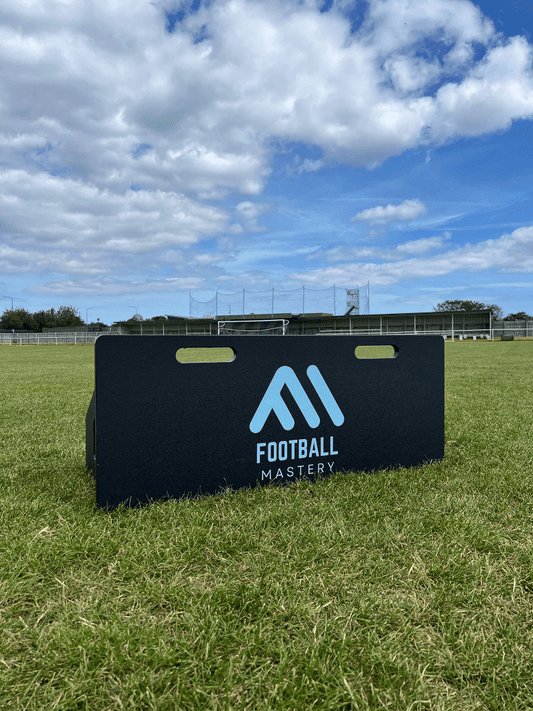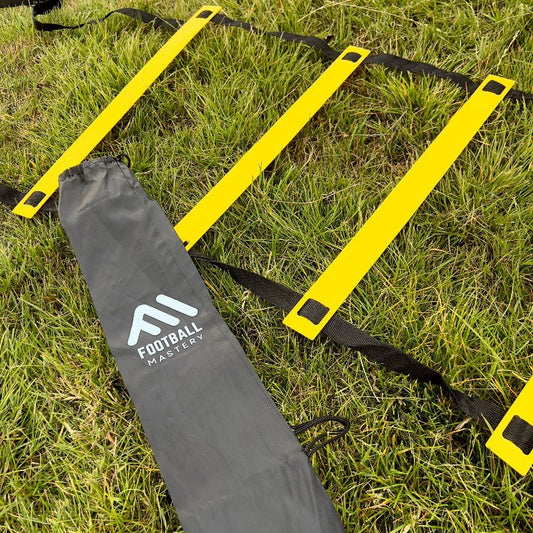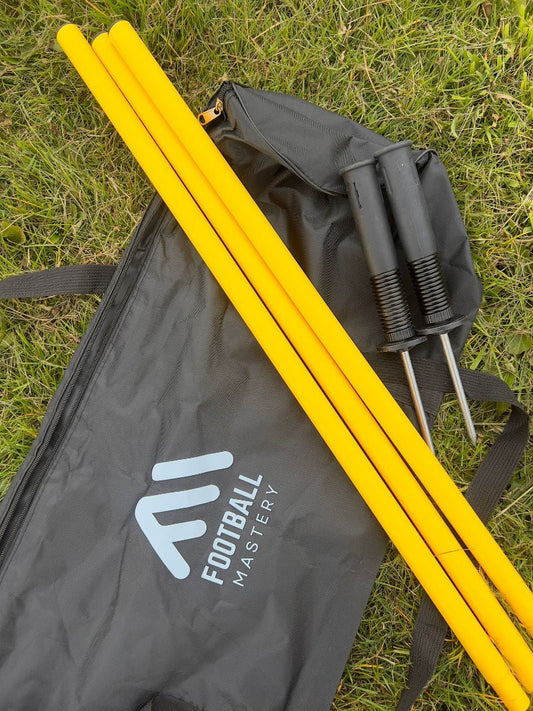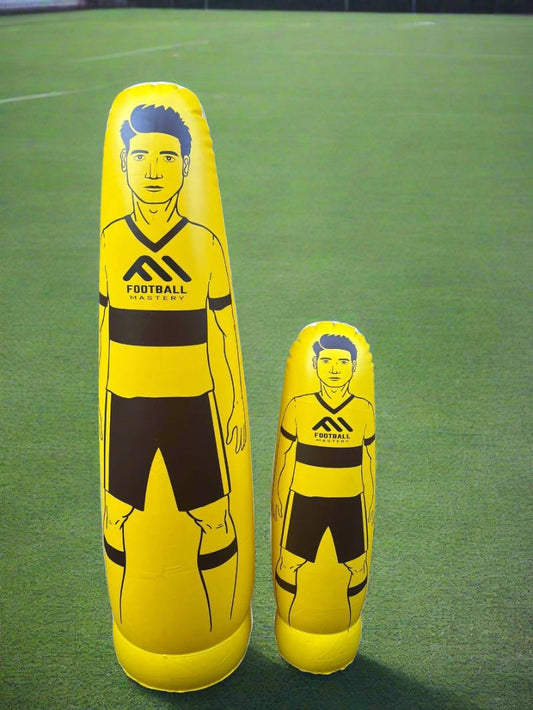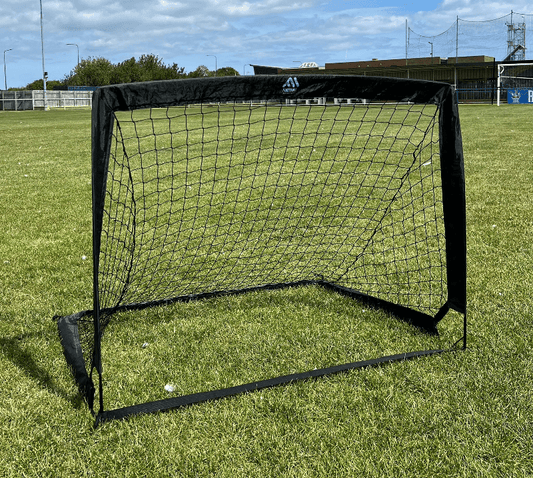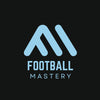
How To Use Agility Ladders To Improve Your Speed
Share
Speed doesn’t just happen—it’s built. Whether you're training for football or focused on overall athletic development, agility ladders are one of the most versatile tools in your training arsenal. This article breaks down how to leverage them for actual speed gains—not just flashy footwork.
You’ll learn:
- The science and strategy behind agility ladder drills
- A breakdown of essential movement patterns like lateral movement and directional change
- How to structure a step-by-step agility ladder progression
- Why proper setup and equipment variation matters
- How agility ladders enhance mind-body coordination and reaction time
- Key exercises like Ickey Shuffle, Quick Feet, and Back & Forth, explained with purpose
- Smart integration into speed training programs for football and other sports
- Real advice on form correction, injury prevention, and drill timing
Why Agility Ladders Are More Than Just a Footwork Tool
Agility ladders aren’t just about moving fast—they’re about moving well.
Speed on the pitch is more than a straight sprint. It’s about how quickly you can change direction, recover balance, and explode into motion. This is where agility ladders come into play.
“Speed is the result of control—not chaos. Train your brain to move your feet.”
Ladders help program your nervous system to become more efficient. With regular training, you develop:
- Foot speed development
- Quickness and acceleration
- Core stability and lower body strength
- Explosive movement patterns
- Reaction time under pressure
This is exactly why agility ladders are a staple in football-specific training. Want proof? Just explore our Speed & Agility collection where every product has been designed to elevate performance on the pitch.
The Science Behind Ladder Drills
At their core, agility ladder exercises function as plyometric training—short bursts of high-effort movement that demand neuromuscular control.
These exercises:
- Stimulate nervous system activation
- Promote muscle memory
- Sharpen mind-body coordination
- Develop single-leg coordination for more balanced strength
Each repetition creates a neural imprint, teaching your muscles not only how to move faster—but how to move smarter. With consistent use, ladders become a powerful tool in your speed improvement drills.
But not all drills are created equal. Let’s look at training structure before you dive in.
Start With a Foundation: Warm-Up and Setup
Before any drill begins, set the tone with a dynamic warm-up to prepare joints, muscles, and your central nervous system.
You should also be aware of your agility ladder setup:
- Choose a flat, non-slip surface for outdoor or indoor use
- Wear proper footwear with light grip and ankle support
- Use portable agility ladders (like those in our Starter Agility Pack) to easily train anywhere
Your ladder dimensions matter too. A 4–9 meter ladder is ideal for both beginners and advanced drills. Custom ladders allow creative variation like L-shapes or hexagon patterns—ideal for sports-specific agility ladder use in football, basketball, or combat sports.
Drill Structure: The Secret to Results
One of the most common mistakes? Doing every drill at full pace with no structure.
Use this agility ladder progression to ensure safety and effectiveness:
- Walk through the pattern slowly
- Master the rhythm
- Focus on form correction—are your knees high? Are you landing soft?
- Increase speed only when control is maintained
- Add progressive overload: complexity, speed, or repetition
This system improves conditioning while reducing the risk of injury.
Beginner Drills That Build Real Speed
Let’s dive into some beginner-to-intermediate drills that translate directly into athletic performance enhancement.
1. One Step
- One foot per square
- Focus on arm movement and staying light
- Great for rhythm and foot speed
2. Side Step
- Face sideways, lead with the outside foot
- Boosts lateral movement and coordination
3. In & Out
- Jump feet together into square, then out to the side
- Helps develop control and explosive movement
4. Quick Feet
- Light taps in each square with both feet
- Ideal for speed ladder workouts and HIIT-style routines
If you're new to ladder drills or training youth athletes, check out our guide: Agility Ladders for Kids – Do They Work?
Intermediate Drills That Push Performance
Once you've built a base, it's time to move into drills that test your reaction time, directional change, and muscular coordination. These movements aren’t just for show—they mimic the unpredictable pace of real matches.
5. Ickey Shuffle
This iconic drill builds foot rhythm, explosive movement, and lateral control.
How to do it:
- Step into the first square with your right foot.
- Step next to it with your left.
- Then place your right foot outside the ladder.
- Repeat with the opposite foot on the next square.
It’s a 3-count move: “In, In, Out.” As you gain confidence, increase the pace, staying low with soft knees.
6. Crossover
A more dynamic challenge to your mind-body coordination and core control.
- Face sideways to the ladder.
- Cross one leg over the other into the square.
- Unwind with the opposite foot to continue laterally.
Maintain balance and flow. This is perfect for sports where hip mobility and foot redirection are key—like football, basketball, or martial arts.
7. River Dance
This upbeat drill uses alternating quick steps and taps to develop tempo, lower body strength, and foot speed development.
- Place one foot in a square and tap fast.
- Switch feet midair and land with the opposite foot.
- Work your way down like a fast-paced hop shuffle.
8. Single Leg Shuffle
This is one of the best for single-leg coordination and hip flexor development.
- Keep your outside leg constant while the inside leg taps each square.
- Emphasize posture—this improves core stability and reduces injury risk.
Coaching Tip: If one leg feels less stable, start with that side. Addressing imbalances builds better full-body control.
Structuring an Agility Session for Maximum Results
Once you know the drills, how do you actually train with them? Here’s a tried-and-tested ladder training format used in many football conditioning sessions:
Example Agility Ladder Session (25–30 minutes)
Warm-Up (5–7 min)
- Jog + dynamic mobility
- Light ladder drills like One Step and Side Step
Main Set (15–20 min)
Choose 4–6 drills like:
- Ickey Shuffle
- Quick Feet
- River Dance
- Crossover
- In & Out
- Double Trouble
Perform each for 20–30 seconds, rest for 15–20 seconds, and repeat 2–3 rounds. Increase drill timing as fitness improves.
Finisher (5 min)
Add a HIIT ladder set:
- 2 minutes of alternating Back & Forth + Quick Feet
- 1-minute rest
- Repeat once
To keep your sessions effective and fresh, check out our full Football Agility Training Guide. It’s packed with ideas and strategy, especially for players preparing for trials or match-day fitness.
Equipment Tips: Don’t Let Your Tools Hold You Back
Using the right gear helps avoid common setbacks like ladder tangling, poor traction, or wasted setup time.
Here’s what to look for:
- Flat and durable rungs to reduce tripping
- Adjustable spacing for drill variation
- Grip-enhanced ends to prevent movement on turf or grass
- Length options (4m for beginners, 9m+ for full-drill circuits)
Need a no-fuss starter kit? The Agility Training Set at Football Mastery includes everything you need—ladder, cones, hurdles, and a carry bag. It's ideal for players training at home or coaches building group drills.
Advanced Drills Used by Elite Athletes
Once you’ve built rhythm, coordination, and control, it’s time to test your limits. These drills demand sharp neuromuscular control, explosive speed, and spatial awareness.
9. Double Trouble
This is a fast-paced drill focused on firing up your nervous system while demanding precision.
- Step in with both feet, then out with both feet, advancing one square at a time.
- Think of it like: “In-In, Out-Out” with a constant forward push.
It forces core engagement, quick feet, and lower body precision—crucial for footballers changing direction on instinct.
10. Hopscotch
Reminiscent of childhood play, this drill demands both strength and coordination.
- Hop with both feet into a square, then land outside on one foot.
- Alternate feet each time, increasing speed without sacrificing control.
Use this to improve balance, reaction time, and hip flexor strength—especially important for strikers and wingers.
11. Ali Shuffle
Inspired by Muhammad Ali’s iconic movement, this advanced drill builds incredible foot speed development and mobility.
- Stand straddling the ladder.
- Switch feet quickly in and out of each square—light on your toes, heels off the ground.
- Stay upright, fluid, and agile.
This is your go-to if you want elite acceleration and lateral agility under fatigue.
Avoiding Injury: Training Smart
Speed training only works if you can stay healthy. Here are some often-overlooked essentials:
Injury Prevention Tips:
- Warm-up thoroughly before each session
- Train on flat, even surfaces only
- Use correct footwear (lightweight with good ankle support)
- Always master form before increasing intensity
- Focus on mobility and flexibility, especially in ankles and hips
Drills like Single Leg Shuffle and Crossover can expose imbalances—address them early to prevent long-term issues.
Pro Tip: Incorporate a weekly recovery session with foam rolling, dynamic stretching, and core work. It enhances form correction and injury resilience.
Weekly Integration: Where Agility Ladders Fit in Football Training
Agility ladders should complement—not replace—your full training plan. Here's how to blend them into a balanced week:
Sample Weekly Breakdown:
| Day | Focus |
|---|---|
| Monday | Speed training + ladder drills (main session) |
| Tuesday | Strength training + recovery |
| Wednesday | HIIT with speed ladder workouts |
| Thursday | Technical ball work + light footwork drills |
| Friday | Tactical training (no ladder work) |
| Saturday | Match or match simulation |
| Sunday | Full recovery or mobility session |
Drills like the In & Out, Ali Shuffle, and Back & Forth pair well with small-sided games and finishing drills to simulate real-match fatigue.
Final Thoughts: The Real Benefit of Agility Ladders
Using agility ladders consistently does far more than just make you look sharp during training. You develop:
- Functional footwork
- Sharp decision-making under pressure
- True directional speed and control
- Better conditioning and athletic resilience
This is exactly why we've built our training tools and resources at Football Mastery—to make speed training accessible and effective for grassroots players and aspiring pros alike.
Explore our full range of agility gear and speed ladders, including kits, training cones, and more. Every product is designed to help you train with intention, not just intensity.
Bonus: Want Printable Workouts?
Stay consistent with your training by downloading our free printable agility ladder workouts, available soon exclusively to our email subscribers. Sign up at the bottom of our homepage and get early access to drills, coaching guides, and football fitness plans.
Speed is trained, not born. Master your footwork, sharpen your mind, and earn every inch on the pitch.
Frequently Asked Questions (FAQ)
1. How long should each agility ladder session last?
A typical agility ladder session should last between 20 to 30 minutes, depending on your fitness level and the intensity of the drills. Beginners may start with 15 minutes, while more advanced athletes can combine it into longer circuit-style workouts with rest intervals.
2. Can agility ladder training help with straight-line sprinting speed?
Yes, indirectly. While agility ladders focus on foot speed, coordination, and reaction time, these qualities contribute to quicker first steps and more efficient stride mechanics, which are crucial for straight-line sprint acceleration.
3. Should I use agility ladders before or after weight training?
It depends on your goal. If you're using agility drills for neuromuscular activation or as a warm-up, do them before weight training. If you're treating agility as a conditioning finisher, place them after your strength session.
4. Do I need a coach to learn agility ladder drills properly?
Not necessarily. While a coach can provide valuable feedback, you can absolutely learn agility ladder drills through video demonstrations, step-by-step guides, and mirror practice. Be sure to record yourself to review your form and spot areas for improvement.
5. Is it okay to do agility ladder drills every day?
Doing agility drills every day is not recommended, especially at high intensity. Aim for 2–4 sessions per week, with at least one rest or active recovery day in between to prevent overuse injuries and ensure proper recovery.
6. Do agility ladders help with jumping or vertical explosiveness?
Yes, but indirectly. Agility ladders contribute to explosive movement, plyometric response, and ankle stiffness, which are all foundations for jumping power. To build serious vertical height, combine ladder work with targeted vertical plyometric training.
7. Are agility ladders only useful for football players?
Not at all. While incredibly effective for football, agility ladders are also valuable for basketball, rugby, tennis, MMA, and general athletic training. Any sport that requires quick feet, balance, and directional change can benefit.
8. What should I do if I keep tripping over the ladder?
This is usually a sign you’re either:
- Going too fast too soon
- Not lifting your feet high enough
- Lacking coordination on one side
Slow down and walk through the pattern. Use visual cues or tape markers before progressing. Gradual improvement is the goal—speed will come with mastery.
9. Can children use agility ladders safely?
Yes, as long as drills are age-appropriate and supervised. Agility ladders are great for developing coordination and balance in children. Start with basic drills like the One Step or Hopscotch, and keep the focus on fun and learning movement patterns.
10. What should I look for when buying an agility ladder?
Look for:
- Durable flat rungs that won’t roll
- Adjustable spacing for drill variation
- Anti-slip materials if used indoors
- A carry bag for portability
You can check out our curated selection in the Football Mastery Agility Ladder Collection designed specifically for athletes at all levels.
